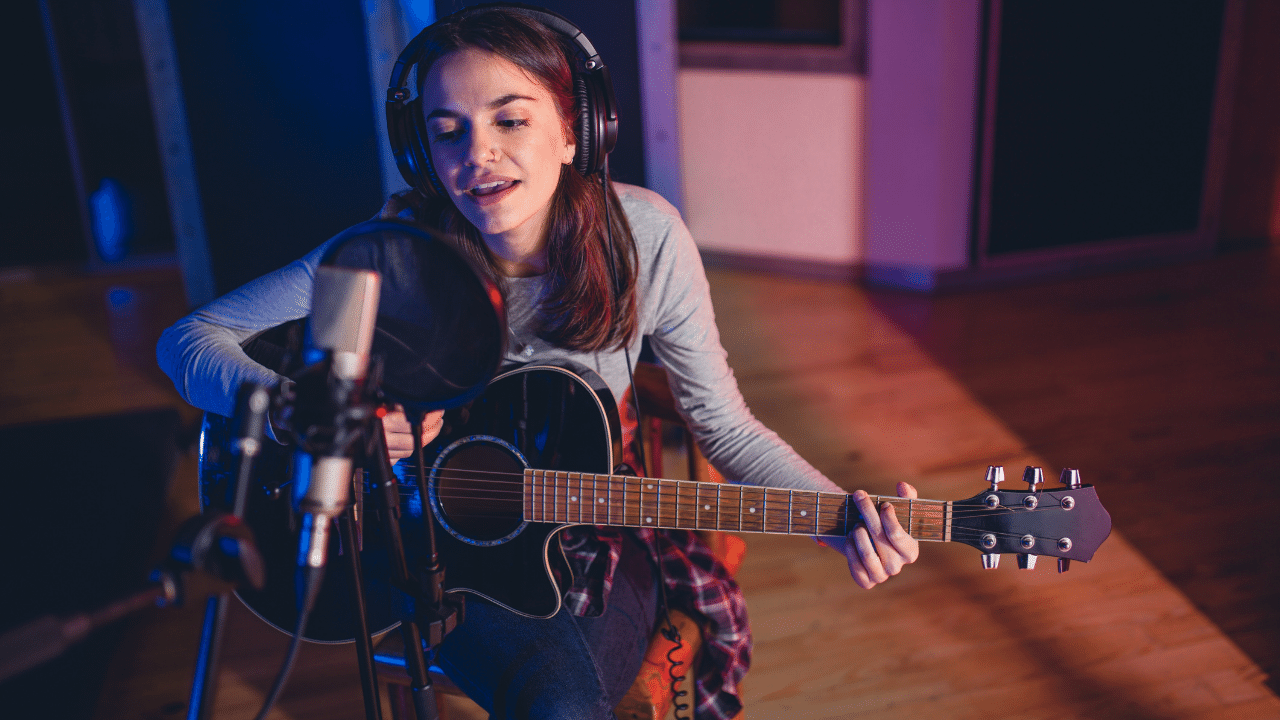How to Produce a Song: The 7 Stages of Music Production

In this post, I’ll break down the 7 stages of music production. In a traditional live instrument production these stages can take place in different locations with multiple engineers involved or in a small studio with a couple of people. Electronic producers and beatmakers typically do everything themselves on their laptops. In some cases the only live instrument they record and produce is the vocal. No matter what the production style is, each song will go through most or all of these stages even if some of the stages are less noticeable.
Stage 1: Songwriting
It all begins with an idea that becomes the song. Melody, rhythm, and lyrics. Then comes the chord progression and the first version of the song structure. After the inspiration hits an artist they will usually turn it into an 8-bar looping chorus or an inspired 16 bars of verse and then figure out the rest of the song later.

Stage 2: Pre-Production
Pre-production is where the song arrangement takes its final shape as far as the instrumentation and song structure. Everybody’s ideas are auditioned and the best idea wins. Parts are practiced to perfection and all live and software instrument sounds are designed, adjusted, and saved.

Stage 3: Recording
Recording is about executing and capturing a performance. That can be a full band playing together live off the floor, a singer overdubbing their vocals, or a beatmaker recording or sequencing MIDI performances. For vocals and live instruments the recording chain should be the best quality available.

Stage 4: Editing
Editing is compositing the best takes into one take unless it was recorded perfectly in one take. After the takes have been composited and crossfaded the tracks are edited for timing according to the click track BPM and grid lines. Then any tuning fixes and processing are done. Finally the tracks are consolidated in preparation for mixing.

Stage 5: Mixing
Mixing begins with level balance and stereo panning of each track. Then tracks are processed in series with EQ and dynamics, and in parallel with delay and reverb. Track parameter automation is the last step before the song is mastered.

Stage 6: Mastering
The purpose of mastering is to make sure the song sounds great on any playback system: headphones, earbuds, large and small home speakers, car stereo, club and concert sound systems. The first step is to remove any noise, clicks or pops. Then the final Compressor, EQ, and Limiter adjustments are made for maximum clarity and universal playback reference level.

Stage 7: Production
Production is the overall process of taking a song from an idea to a finished product that can be downloaded or streamed by listeners. It’s the organization and overseeing of the songs, sounds, performances, places and people. It’s also the project management of the budget and schedule. Ultimately the songs will dictate everything about the production.

"Sound Design is the new Pre-Production" - Futch
I like to say that sound design is the new pre-production because a lot of music production is electronic now. Before computer recording, DAWs and electronic production rose to prominence in the late 90's and early 00's most music was live, or overdubbed, analog recordings of live musicians. This required a lot of rehearsal of the musician's parts and the song structure. Bands and producers would typically spend a few days or a few weeks auditioning sounds, practicing parts, and finalizing song arrangements before heading into the recording studio. This optimized the time spent using the recording studio and meant that everyone simply had to execute the well-rehearsed songs.
With electronic songwriting and production the emphasis is now on sound design. Usually the music producer/songwriter/programmer/beat maker is all one person, customizing sounds on their laptop. Most of the time spent working on the some involves tweaking knobs, pressing buttons, connecting LFOs and envelopes to synth or sampler parameters to create motion in the sound. Customizing effect chains and sculpting sounds with stock DAW plugins and VSTs.
Conclusion: Songwriting and music production can be done in many different ways. There are a few traditional sequences that make sense to most people but it all depends on what you are trying to achieve. Pop music songwriting and production will require a different approach that punk rock or reggae production. The genre and style of the music and artist will help to determine the amount and style of editing the song needs. Will you program the beats, record drums live off the floor, or quantize every beat during editing? Will you use Auto-tune as an effect, as pitch correction on every note, or not use it at all? Maybe the best way to go about things is to try every approach you can and see which styles and techniques resonate with you and the songs.
Download my FREE 7 Stages of Music Production guide...
Make Better Music!

Futch - Music Production Coach, Ableton Certified Trainer
#ableton #note #live #beatmaker #songwriter #producer
24 week live online classes and on-demand video training:
• Music Production Fundamentals • Writing Exciting Songs • Designing Your Artistic Vision






